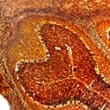Background
- Carnosine (beta-alanyl-L-histidine), also called L-carnosine, was first discovered in 1900 by W. S. Gulewitsch. The structure of carnosine is made up of two amino acids, histidine and alanine. This molecule is found only in animal tissue, especially skeletal, heart muscle, nerve, and brain tissue. Most vegetarian diets may not provide enough carnosine, but whether this has a negative effect remains undetermined.
- The exact biological role of carnosine is unclear. Individuals who have Down syndrome or who experience seizures have lower levels of carnosine. Therefore, carnosine is believed to help control brain activity.
- Carnosine supplements are popular among bodybuilders and athletes, who hope to improve recovery from muscle fatigue. More recently, it has been used as an antiaging treatment. Carnosine has been called a "longevity nutrient" and the "antiaging and antioxidant dipeptide," based on findings showing that animals with higher levels of carnosine appear to live longer.
- Carnosine is also used to prevent or treat diabetes complications, such as nerve disorders, cataracts, and kidney dysfunction. Clinical trials have shown benefits associated with carnosine supplementation in children with autism and eye disorders, including cataracts, corneal disease, and eyeball injury. However, evidence supporting the use of carnosine for any medical condition in humans is limited.
References
- Babizhayev, M. A., Deyev, A. I., Yermakova, V. N., Semiletov, Y. A., Davydova, N. G., Kurysheva, N. I., Zhukotskii, A. V., and Goldman, I. M. N-Acetylcarnosine, a natural histidine-containing dipeptide, as a potent ophthalmic drug in treatment of human cataracts. Peptides 2001;22(6):979-994. View Abstract
- Begum, G., Cunliffe, A., and Leveritt, M. Physiological role of carnosine in contracting muscle. Int J Sport Nutr.Exerc.Metab 2005;15(5):493-514. View Abstract
- Chez, M. G., Buchanan, C. P., Aimonovitch, M. C., Becker, M., Schaefer, K., Black, C., and Komen, J. Double-blind, placebo-controlled study of L-carnosine supplementation in children with autistic spectrum disorders. J.Child Neurol. 2002;17(11):833-837. View Abstract
- Guiotto, A., Calderan, A., Ruzza, P., and Borin, G. Carnosine and carnosine-related antioxidants: a review. Curr.Med Chem. 2005;12(20):2293-2315. View Abstract
- Hipkiss, A. R. Carnosine, a protective, anti-ageing peptide? Int.J.Biochem.Cell Biol. 1998;30(8):863-868. View Abstract
- Hipkiss, A. R. Glycation, ageing and carnosine: are carnivorous diets beneficial? Mech.Ageing Dev. 2005;126(10):1034-1039. View Abstract
- Hipkiss, A. R. On the mechanisms of ageing suppression by dietary restriction-is persistent glycolysis the problem? Mech.Ageing Dev. 2006;127(1):8-15. View Abstract
- Hipkiss, A. R. Would carnosine or a carnivorous diet help suppress aging and associated pathologies? Ann.N.Y.Acad.Sci 2006;1067:369-374. View Abstract
- Holecek, V., Liska, J., Racek, J., and Rokyta, R. [The significance of free radicals and antioxidants due to the load induced by sport activity]. Cesk.Fysiol. 2004;53(2):76-79. View Abstract
- Maichuk, IuF, Formaziuk, V. E., and Sergienko, V. I. [Development of carnosine eyedrops and assessing their efficacy in corneal diseases]. Vestn.Oftalmol. 1997;113(6):27-31. View Abstract
- Nagai, K. and Suda, T. Realization of spontaneous healing function by carnosine. Methods Find.Exp.Clin.Pharmacol. 1988;10(8):497-507. View Abstract
- Reddy, V. P., Garrett, M. R., Perry, G., and Smith, M. A. Carnosine: a versatile antioxidant and antiglycating agent. Sci Aging Knowledge.Environ. 5-4-2005;2005(18):e12. View Abstract
- Severina, I. S., Bussygina, O. G., and Pyatakova, N. V. Carnosine as a regulator of soluble guanylate cyclase. Biochemistry (Mosc.) 2000;65(7):783-788. View Abstract
- Stuerenburg, H. J. The roles of carnosine in aging of skeletal muscle and in neuromuscular diseases. Biochemistry (Mosc.) 2000;65(7):862-865. View Abstract
- Yoshikawa, T., Naito, Y., and Kondo, M. Antioxidant therapy in digestive diseases. J Nutr.Sci Vitaminol.(Tokyo) 1993;39 Suppl:S35-S41. View Abstract







